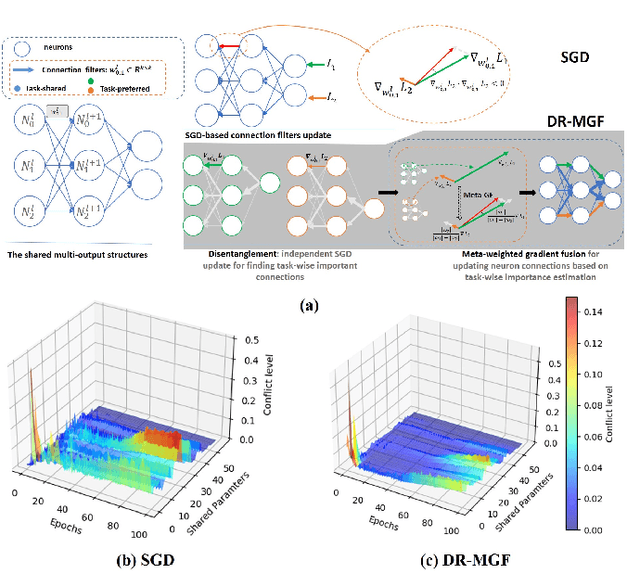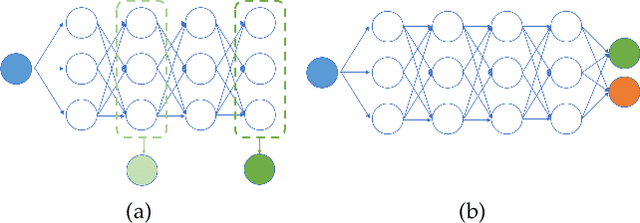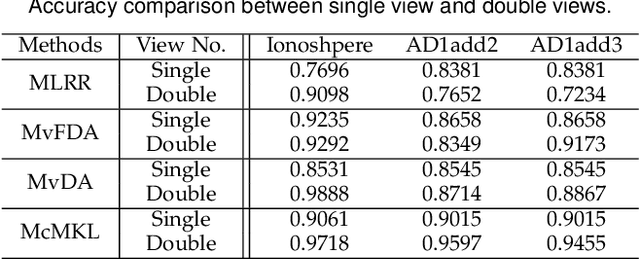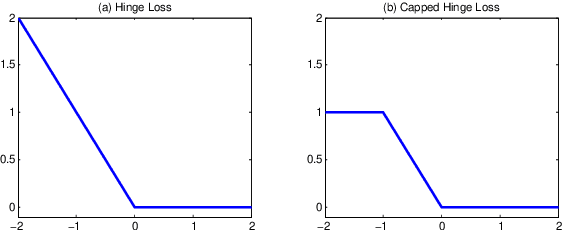Ling-Li Zeng
DenseNet and Support Vector Machine classifications of major depressive disorder using vertex-wise cortical features
Nov 18, 2023



Abstract:Major depressive disorder (MDD) is a complex psychiatric disorder that affects the lives of hundreds of millions of individuals around the globe. Even today, researchers debate if morphological alterations in the brain are linked to MDD, likely due to the heterogeneity of this disorder. The application of deep learning tools to neuroimaging data, capable of capturing complex non-linear patterns, has the potential to provide diagnostic and predictive biomarkers for MDD. However, previous attempts to demarcate MDD patients and healthy controls (HC) based on segmented cortical features via linear machine learning approaches have reported low accuracies. In this study, we used globally representative data from the ENIGMA-MDD working group containing an extensive sample of people with MDD (N=2,772) and HC (N=4,240), which allows a comprehensive analysis with generalizable results. Based on the hypothesis that integration of vertex-wise cortical features can improve classification performance, we evaluated the classification of a DenseNet and a Support Vector Machine (SVM), with the expectation that the former would outperform the latter. As we analyzed a multi-site sample, we additionally applied the ComBat harmonization tool to remove potential nuisance effects of site. We found that both classifiers exhibited close to chance performance (balanced accuracy DenseNet: 51%; SVM: 53%), when estimated on unseen sites. Slightly higher classification performance (balanced accuracy DenseNet: 58%; SVM: 55%) was found when the cross-validation folds contained subjects from all sites, indicating site effect. In conclusion, the integration of vertex-wise morphometric features and the use of the non-linear classifier did not lead to the differentiability between MDD and HC. Our results support the notion that MDD classification on this combination of features and classifiers is unfeasible.
Learning Task-preferred Inference Routes for Gradient De-conflict in Multi-output DNNs
May 31, 2023



Abstract:Multi-output deep neural networks(MONs) contain multiple task branches, and these tasks usually share partial network filters that lead to the entanglement of different task inference routes. Due to the inconsistent optimization objectives, the task gradients used for training MONs will interfere with each other on the shared routes, which will decrease the overall model performance. To address this issue, we propose a novel gradient de-conflict algorithm named DR-MGF(Dynamic Routes and Meta-weighted Gradient Fusion) in this work. Different from existing de-conflict methods, DR-MGF achieves gradient de-conflict in MONs by learning task-preferred inference routes. The proposed method is motivated by our experimental findings: the shared filters are not equally important to different tasks. By designing the learnable task-specific importance variables, DR-MGF evaluates the importance of filters for different tasks. Through making the dominances of tasks over filters be proportional to the task-specific importance of filters, DR-MGF can effectively reduce the inter-task interference. The task-specific importance variables ultimately determine task-preferred inference routes at the end of training iterations. Extensive experimental results on CIFAR, ImageNet, and NYUv2 illustrate that DR-MGF outperforms the existing de-conflict methods both in prediction accuracy and convergence speed of MONs. Furthermore, DR-MGF can be extended to general MONs without modifying the overall network structures.
Frequency-specific segregation and integration of human cerebral cortex: an intrinsic functional atlas
Mar 27, 2021



Abstract:The frequency-specific coupling mechanism of the functional human brain networks underpins its complex cognitive and behavioral functions. Nevertheless, it is not well unveiled what are the frequency-specific subdivisions and network topologies of the human brain. In this study, we estimated functional connectivity of the human cerebral cortex using spectral connection, and conducted frequency-specific parcellation using eigen-clustering and gradient-based methods, and then explored their topological structures. 7T fMRI data of 184 subjects in the HCP dataset were used for parcellation and exploring the topological properties of the functional networks, and 3T fMRI data of another 890 subjects were used to confirm the stability of the frequency-specific topologies. Seven to ten functional networks were stably integrated by two to four dissociable hub categories at specific frequencies, and we proposed an intrinsic functional atlas containing 456 parcels according to the parcellations across frequencies. The results revealed that the functional networks contained stable frequency-specific topologies, which may imply more abundant roles of the functional units and more complex interactions among them.
Secure Classification With Augmented Features
Nov 01, 2017



Abstract:With the evolution of data collection ways, it is possible to produce abundant data described by multiple feature sets. Previous studies show that including more features does not necessarily bring positive effect. How to prevent the augmented features worsening classification performance is crucial but rarely studied. In this paper, we study this challenging problem by proposing a secure classification approach, whose accuracy is never degenerated when exploiting augmented features. We propose two ways to achieve the security of our method named as SEcure Classification (SEC). Firstly, to leverage augmented features, we learn various types of classifiers and adapt them by employing a specially designed robust loss. It provides various candidate classifiers to meet the following assumption of security operation. Secondly, we integrate all candidate classifiers by approximately maximizing the performance improvement. Under a mild assumption, the integrated classifier has theoretical security guarantee. Several new optimization methods have been developed to accommodate the problems with proved convergence. Besides evaluating SEC on 16 data sets, we also apply SEC in the application of diagnostic classification of schizophrenia since it has vast application potentiality. Experimental results demonstrate the effectiveness of SEC in both tackling security problem and discriminating schizophrenic patients from healthy controls.
 Add to Chrome
Add to Chrome Add to Firefox
Add to Firefox Add to Edge
Add to Edge